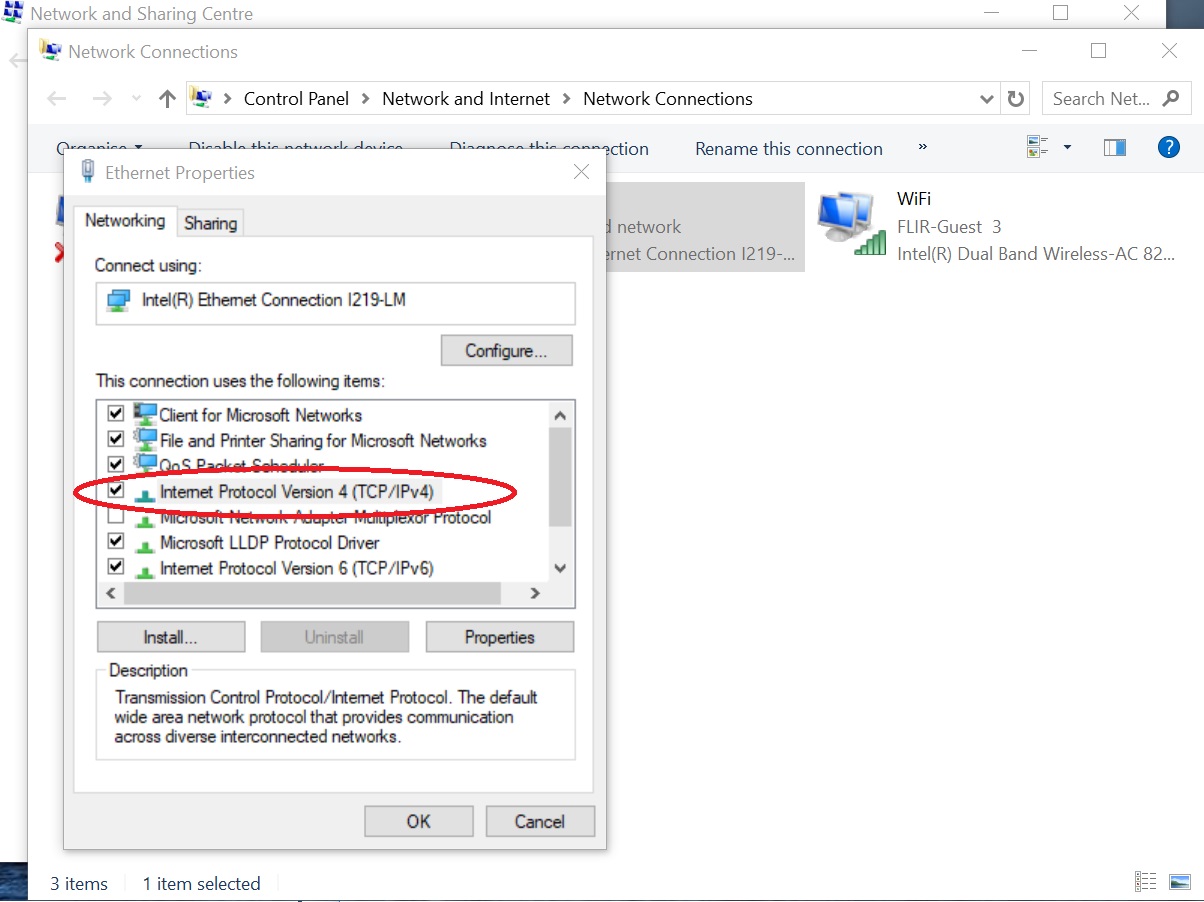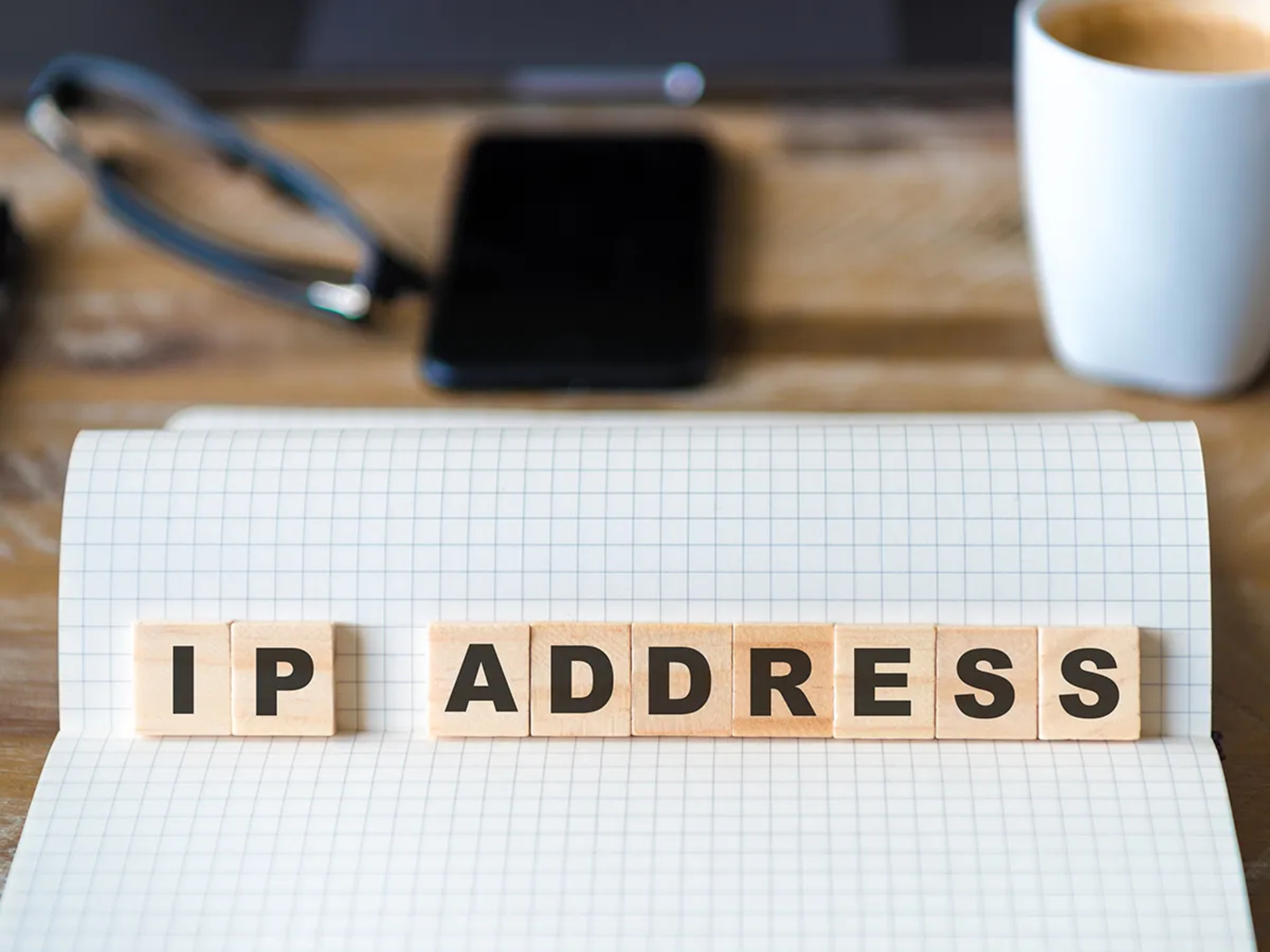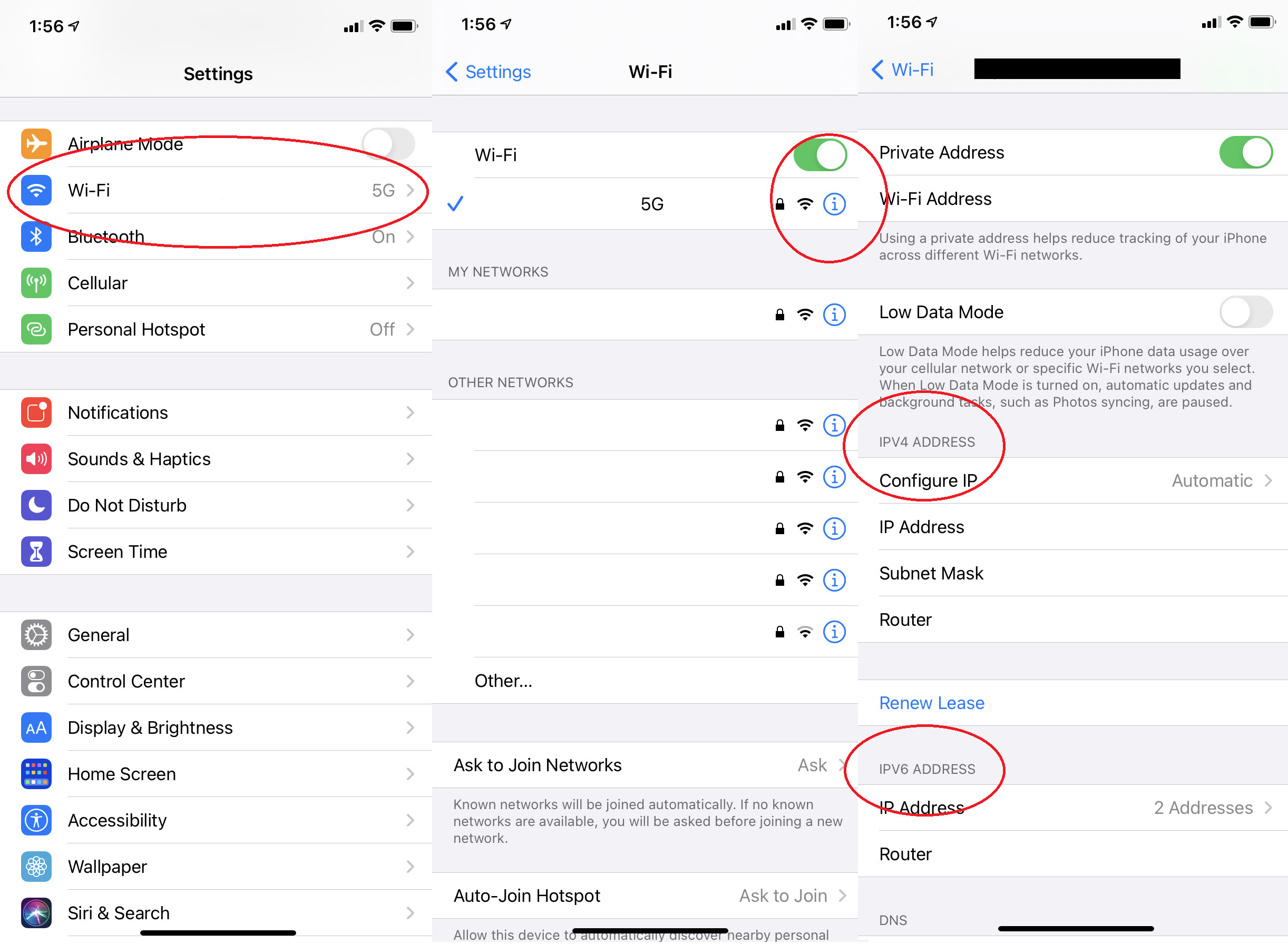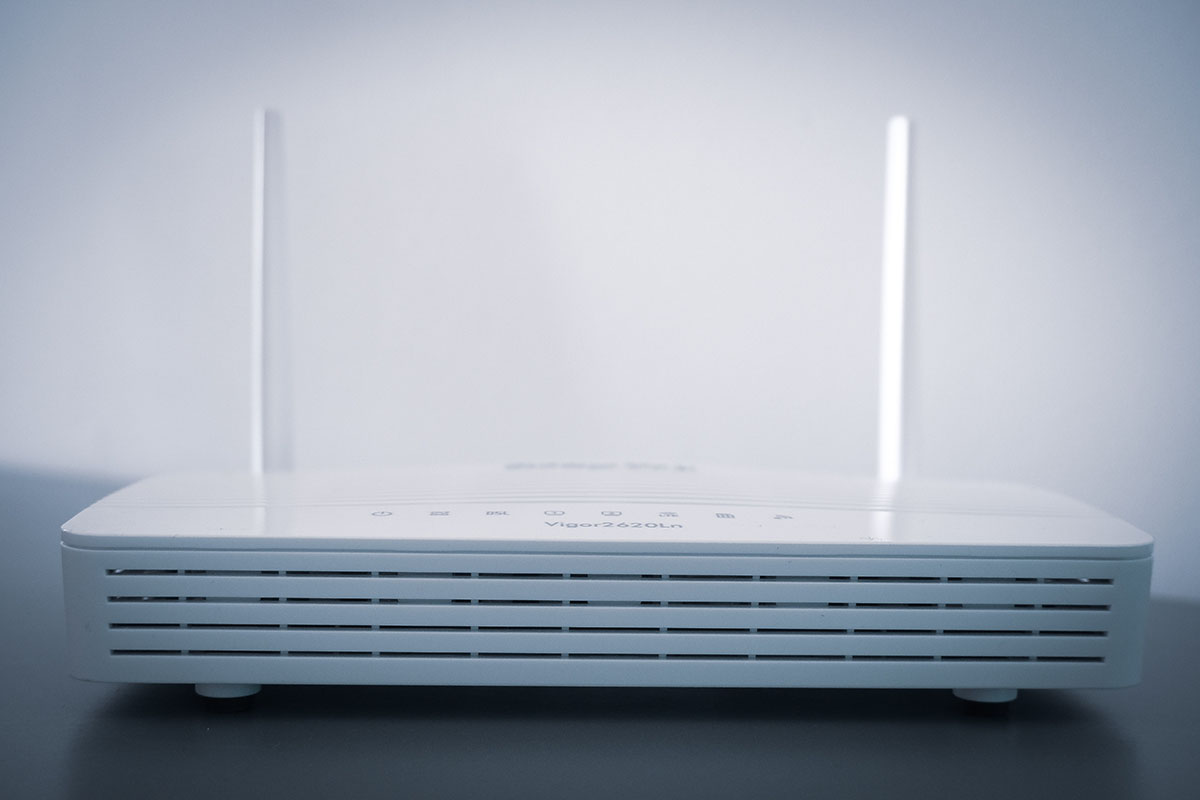Introduction
Welcome to the world of IP addresses! In this age of technology, connecting to an IP address has become an essential part of our daily lives. Whether you’re accessing a website, connecting to a remote server, or setting up a network, understanding how to connect to an IP address is crucial.
In this article, we will provide you with a comprehensive guide on how to connect to an IP address on various operating systems such as Windows, Mac, and Linux. But before we dive into the technical aspects, let’s first gain an understanding of what an IP address actually is.
An IP address, short for Internet Protocol address, is a unique numeric identifier assigned to each device connected to a network. It serves two main purposes: identifying the host or network interface, and providing the location of the device on the network.
IPv4 addresses are composed of four sets of numbers separated by periods, such as 192.168.0.1. These addresses are still widely used, but due to the exponential growth of the internet, the newer IPv6 addresses are being implemented to accommodate the increasing number of devices.
Now that we have a basic understanding of IP addresses, let’s explore the steps to connect to an IP address on different operating systems. Whether you’re a beginner or an advanced user, this guide will help you navigate through the process and troubleshoot any connection issues that may arise.
So, without further ado, let’s dive into the world of IP addresses and learn how to connect to them on different operating systems!
Understanding IP Addresses
Before we delve into the process of connecting to an IP address, it’s important to have a basic understanding of what an IP address is and how it works.
As mentioned earlier, an IP address is a unique numerical identifier assigned to each device connected to a network. It serves as a means of identifying and locating devices on a network.
There are two major versions of IP addresses in use today: IPv4 and IPv6. IPv4 addresses are the most commonly used and consist of four sets of numbers separated by periods, such as 192.168.0.1. This format allows for a total of approximately 4.3 billion unique addresses.
However, due to the rapid expansion of the internet and the increasing number of devices connected to it, IPv4 addresses are quickly running out. To address this issue, IPv6 was introduced, which uses a different addressing scheme. IPv6 addresses are represented by eight groups of four hexadecimal digits, separated by colons, such as 2001:0db8:85a3:0000:0000:8a2e:0370:7334. This format allows for a staggering number of unique addresses.
In addition to static IP addresses, which are manually assigned to devices, there are also dynamic IP addresses. Dynamic IP addresses are assigned by a server and can change over time, allowing for efficient use of available addresses.
IP addresses can be further categorized into two types: public and private. Public IP addresses are assigned by internet service providers and are unique to each device on the internet. These addresses allow devices to communicate with each other across different networks.
On the other hand, private IP addresses are used within local networks, such as home or office networks. These addresses are not directly accessible from the internet and are used for communication between devices within the same network.
Understanding IP addresses is essential when it comes to connecting to devices and services on a network. It allows us to identify and locate specific devices, ensuring proper communication and data transfer.
Now that we have a grasp of what IP addresses are and how they work, let’s move on to the process of connecting to an IP address on various operating systems.
Connecting to an IP Address
Connecting to an IP address involves establishing a connection between your device and a specific IP address on a network. This process allows you to access devices, services, or websites hosted on that IP address.
The steps to connect to an IP address may vary slightly depending on the operating system you are using. In the following sections, we will walk you through the process on Windows, Mac, and Linux.
Connecting to an IP Address on Windows:
- Open the Start menu and search for “Command Prompt” or “CMD”.
- Launch the Command Prompt.
- Type the command
ping [IP_Address], replacing [IP_Address] with the actual IP address you want to connect to. - Press Enter and wait for the ping results to display. This will confirm if your device is able to reach the IP address.
- If the ping is successful, you can access the IP address using a web browser or any other appropriate application.
Connecting to an IP Address on Mac:
- Click on the Launchpad icon in the Dock, and open the Terminal application.
- In the Terminal window, type the command
ping [IP_Address], replacing [IP_Address] with the actual IP address you want to connect to. - Press Enter and wait for the ping results to display. This will indicate if your device can reach the IP address.
- If the ping is successful, you can access the IP address using a web browser or the appropriate application.
Connecting to an IP Address on Linux:
- Open the Terminal application.
- Type the command
ping [IP_Address], replacing [IP_Address] with the actual IP address you want to connect to. - Press Enter and observe the ping results to determine if your device can reach the IP address.
- If the ping is successful, you can access the IP address using a web browser or relevant application.
It’s important to note that connecting to an IP address is not limited to web browsing. You can also use specialized applications or protocols, such as Remote Desktop Protocol (RDP) or Secure Shell (SSH), to establish connections to specific IP addresses for various purposes.
Now that you know the basic steps to connect to an IP address on different operating systems, you can confidently navigate networks and access the resources you need. However, there may be occasions when you encounter connection issues. In the next section, we will address some common troubleshooting techniques for resolving these issues.
Connecting to an IP Address on Windows
If you’re using a Windows operating system, connecting to an IP address is a straightforward process. Here’s a step-by-step guide to help you navigate through the process:
- Open the Start menu by clicking on the Windows icon located at the bottom left corner of the screen.
- In the search bar, type “Command Prompt” or “CMD” and press Enter.
- The Command Prompt window will open. Type the command
ping [IP_Address], replacing [IP_Address] with the actual IP address you want to connect to. For example, if the IP address is 192.168.0.1, you would typeping 192.168.0.1. - Press Enter to execute the command.
- You’ll see the Command Prompt displaying the ping results. If the ping is successful, it means your device is able to communicate with the IP address.
- Once the ping is successful, you can access the IP address using a web browser or any other appropriate application.
It’s important to note that the ping command is used to check the connectivity between your device and the target IP address. It sends a small packet of data to the IP address and waits for a response. If the ping is successful, it means that the IP address is reachable.
If you’re unable to establish a successful ping connection, it could indicate possible network issues or misconfiguration. In such cases, double-check the IP address you’re trying to connect to and ensure that your device is connected to the correct network. Troubleshooting network connectivity issues is beyond the scope of this guide, but it may involve checking your network settings, resetting your router, or contacting your network administrator or internet service provider for assistance.
Now that you know the steps to connect to an IP address on Windows, you can easily access devices, services, or websites hosted on specific IP addresses. Whether you’re managing a network or simply browsing the internet, understanding how to connect to IP addresses is an essential skill to have.
Connecting to an IP Address on Mac
If you’re using a Mac, connecting to an IP address is a straightforward process. Here’s a step-by-step guide to help you connect to an IP address on your Mac:
- Click on the Launchpad icon in the Dock, and open the Terminal application.
- In the Terminal window, type the command
ping [IP_Address], replacing [IP_Address] with the actual IP address you want to connect to. For example, if the IP address is 192.168.0.1, you would typeping 192.168.0.1. - Press Enter to execute the command.
- The Terminal will display the ping results. If the ping is successful, it means your Mac is able to communicate with the IP address.
- Once the ping is successful, you can access the IP address using a web browser or any other appropriate application.
The ping command is a useful tool for checking the connectivity between your Mac and the target IP address. It sends a small packet of data to the IP address and waits for a response. A successful ping indicates that the IP address is reachable.
If the ping is unsuccessful, you may encounter network issues or misconfiguration. Double-check the IP address you’re trying to connect to and ensure that your Mac is connected to the correct network. You may need to troubleshoot your network settings, reset your router, or contact your network administrator or internet service provider for further assistance.
Remember that connecting to an IP address on a Mac is not limited to web browsing. You can also use other applications or protocols, such as Remote Desktop Protocol (RDP) or Secure Shell (SSH), to establish connections to specific IP addresses for various purposes.
Now that you know the steps to connect to an IP address on your Mac, you can easily access devices, services, or websites hosted on specific IP addresses. Whether you’re a casual user or a network administrator, understanding how to connect to IP addresses is a valuable skill to have.
Connecting to an IP Address on Linux
If you’re using a Linux operating system, connecting to an IP address is a simple process. Here’s a step-by-step guide to help you connect to an IP address on your Linux machine:
- Open the Terminal application on your Linux machine. You can usually find it in the Applications menu or by pressing Ctrl+Alt+T.
- In the Terminal window, type the command
ping [IP_Address], replacing [IP_Address] with the actual IP address you want to connect to. For example, if the IP address is 192.168.0.1, you would typeping 192.168.0.1. - Press Enter to execute the command.
- The Terminal will display the ping results. If the ping is successful, it means your Linux machine is able to communicate with the IP address.
- Once the ping is successful, you can access the IP address using a web browser or any other appropriate application.
The ping command is a useful tool for checking the connectivity between your Linux machine and the target IP address. It sends a small packet of data to the IP address and waits for a response. A successful ping indicates that the IP address is reachable.
If the ping is unsuccessful, it may indicate network issues or misconfiguration. Double-check the IP address you’re trying to connect to and ensure that your Linux machine is connected to the correct network. You may need to troubleshoot your network settings, restart your router, or contact your network administrator or internet service provider for further assistance.
Linux offers a wide range of applications and protocols for connecting to IP addresses, including command-line tools like SSH (Secure Shell) and Telnet, as well as graphical user interface (GUI) tools. These tools allow you to establish connections to specific IP addresses and perform various tasks, such as remote login, file transfer, and network administration.
Now that you know the steps to connect to an IP address on Linux, you can easily access devices, services, or websites hosted on specific IP addresses. Whether you’re a Linux enthusiast or a seasoned system administrator, understanding how to connect to IP addresses is an invaluable skill to possess.
Troubleshooting Connection Issues
While connecting to an IP address is usually a smooth process, there may be occasions when you encounter connection issues. Here are some common troubleshooting techniques to help you resolve any connectivity problems:
1. Check the IP address
Make sure you have the correct IP address you want to connect to. Double-check for any typos or errors in the IP address. If necessary, try pinging a different IP address to see if the issue is specific to a particular address.
2. Verify network connectivity
Ensure that your device is connected to the correct network and has a stable internet connection. If you’re using wireless connectivity, check if there are any signal or interference issues. Restarting your modem or router may also help resolve connectivity problems.
3. Firewall and security settings
Firewalls and security settings can sometimes block certain IP addresses or services. Check your firewall settings or any security software running on your device and make sure they are not blocking the connection. Adjust the settings if necessary or temporarily disable them to see if it resolves the issue.
4. Clear DNS cache
If you’re experiencing issues with domain names (URLs) rather than IP addresses, clearing your DNS cache can help. In the command prompt or terminal, enter the appropriate command for your operating system to clear the DNS cache. For example, on Windows, you can use the command ipconfig /flushdns.
5. Proxy settings
If you’re accessing an IP address through a proxy server, check your proxy settings. Ensure that the proxy server’s address and port are correctly configured. You may need to consult your network administrator or internet service provider for the correct proxy settings.
6. Network administrator assistance
If you’re connecting to an IP address on a corporate or managed network, reach out to your network administrator for assistance. They can help diagnose and resolve any network-related issues that may be causing the connectivity problems.
By following these troubleshooting techniques, you can often identify and resolve common connection issues. However, if you’re still unable to establish a connection, it may be necessary to seek professional help or consult online forums and communities for further assistance tailored to your specific situation.
Conclusion
Connecting to an IP address is an essential skill that allows us to access devices, services, and websites on a network. Whether you’re a beginner or an experienced user, understanding how to connect to an IP address on different operating systems is crucial in today’s digital age.
In this article, we explored the basics of IP addresses and their significance in network connectivity. We learned about the different types of IP addresses, such as IPv4 and IPv6, and the distinction between public and private IP addresses.
We also provided step-by-step guides on how to connect to an IP address on Windows, Mac, and Linux operating systems. By following these instructions, you can establish connections and access resources hosted on specific IP addresses.
In addition, we discussed common troubleshooting techniques for resolving connectivity issues. By checking IP addresses, verifying network connectivity, adjusting firewall settings, clearing DNS cache, reviewing proxy settings, and seeking network administrator assistance, you can often overcome common connection problems.
Remember, connecting to an IP address goes beyond web browsing. You can also use specialized applications and protocols for tasks such as remote login, file transfer, and network administration.
By mastering the art of connecting to IP addresses, you can navigate the vast network landscape and unlock the plethora of services and resources available to you. Whether you’re managing a network, troubleshooting connectivity issues, or simply exploring the digital realm, the ability to connect to IP addresses is an indispensable skill.
So, embrace this knowledge, be confident in your ability to connect to IP addresses, and enjoy the endless possibilities that it opens up for you!

























